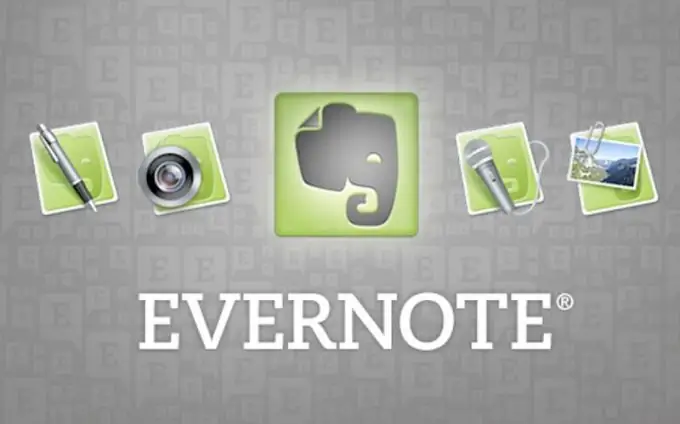- Author Lauren Nevill [email protected].
- Public 2023-12-16 18:48.
- Last modified 2025-01-23 15:15.
For now, I would recommend that you sign up for an Evernote account and download the free version of the program. Because the best way to learn anything is through daily practice. One of the reasons Evernote is such a powerful application is that it makes it easy to add new files and then retrieve that information over time.

Instructions
Step 1
What can you put into Evernote?
Here are the types of files you can add to
Evernote:
Documents Personal notes
Image Web Pages
Manual PDFs
Audio recordings
Step 2
You can also mix the types of notes you use and create something with richer context. For example, you can add a photo and attach a few lines to it about where it was taken, who was present, and why it is so important for future use. You can even use a tool like Skitch to mark up your photo and add important notes.
Regardless of the content, it all starts with a note.
Step 3
Taking notes is the main function of Evernote. With its help, you can track any information important to you. Just think of anything you'd like to archive and add it to your note. For example: a business idea, text message, email, photo, or important file.
Step 4
A note can be a picture, an audio file, handwritten text, or even a single word. You can create up to 100,000 separate notes within your Evernote account or make a dump inside just one note. The only real "limit" for a note is the size of an individual file. For a free account, no note can be larger than 25 MB. And this size increases to 100 MB for the premium version.
Step 5
Here are a few things you can do with a single note:
1. New note. Use this button to manually create a new note.
2. Notepad. This cursor shows the specific notebook in which this note is stored (we will return to this function a little later).
3. Tags. This is an optional feature that allows you to create a shortcut (or multiple shortcuts) to give context to your note. This is an important feature to help you search and find notes from the past.
4. Editor toolbar. The editing function works like any average WYSIWYG * (“What You See Is What You Get”) editor. If you look at the image above, you will see various options (including fonts, bold text and italics, indentation, list formatting). You can also create simple tables and to-do lists with a checkbox.
5. Ability to share. Using this option, you can send a note by email, web address, Facebook or other third party platforms.
6. Information. This option offers the use of additional functions when working with notes, which is important when using a premium account and having multiple authors.






